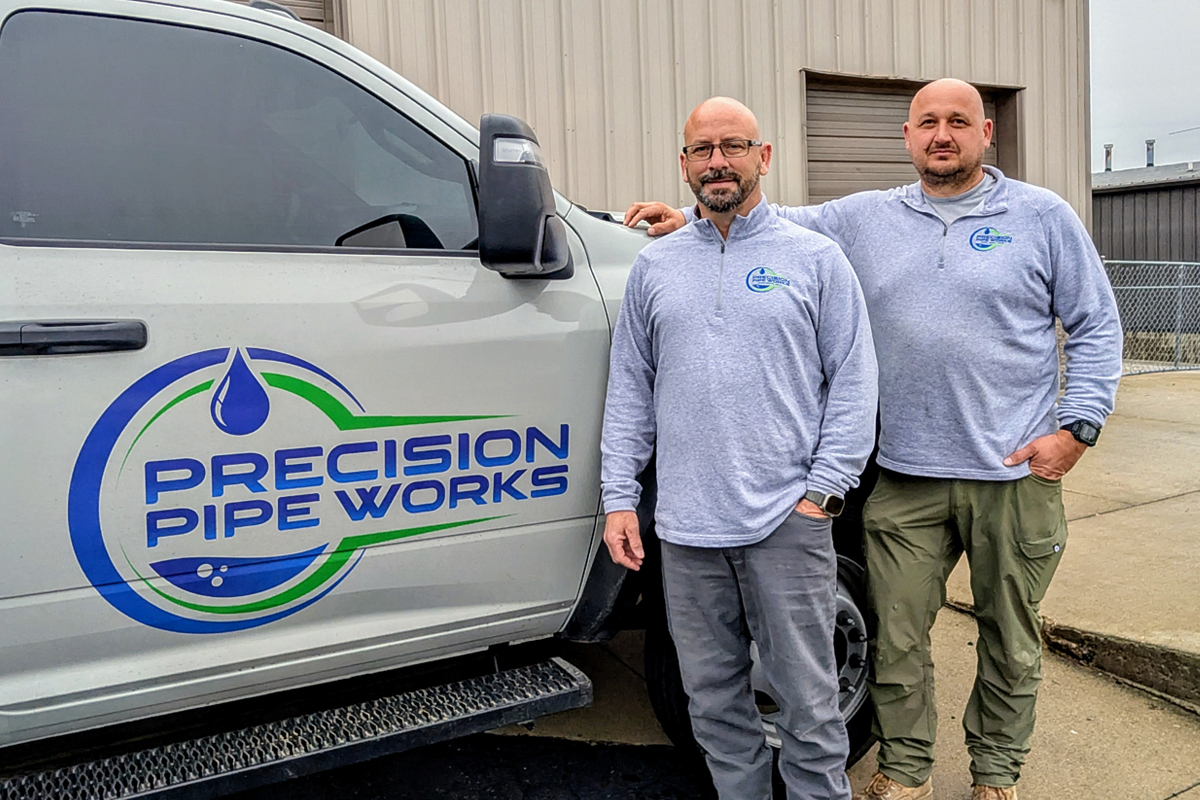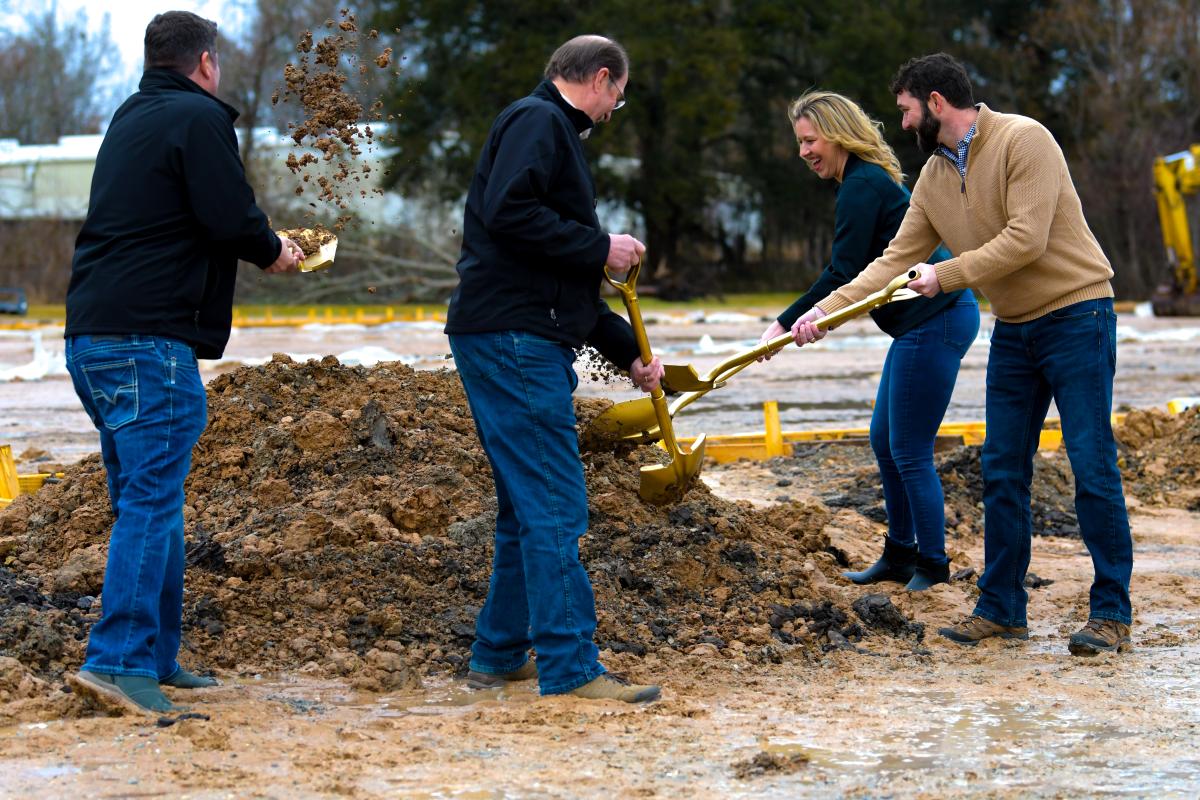Design-Build Used in Jacksonville, Fla., HDD Project
When performed at its highest level and under extreme conditions, construction management can drive a project to achieve an exceptional level of success. This was the case in Jacksonville, Fla., last summer when a technically challenging high-profile design-build river crossing project was performed.
Michels Directional Crossings successfully completed the horizontal directional drilling (HDD), reaming a 36-in. steel water main pipe pullback installation for the 6,575-ft project that included a crossing of the St. John’s River. Michels PipelineConstruction also played an integral role by performing HDD site preparation, steel pipe fabrication, X-Ray, ID/OD field joint coating, hydrostatic testing and HDD pullback pipe handling. The operations were all performed within a limited right of way along a major Florida expressway. Michels Directional Crossings and Michels Pipeline Construction are divisions of Michels Corp., a Brownsville, Wis.-based utility contractor.
The complete JEA Total Water ManagementPlan Pipeline Project included the installation of 43,300 lf of piping, which ranges in diameter from 24 to 36 in. The water transmission pipeline was designed to connect JEA’s north grid with its south grid to alleviate reductions in consumptive use permits for wells in the south grid area.
JEA is the seventh largest community-owned electric utility in the United States and one of the largest water and sewer utilities in the nation providing electric, water and sewer service to residents and businesses in northeast Florida. The utility serves 305,000 water and 230,000 sewer customers.
The 6,575-ft long segment was the longest 36-in. drill ever attempted by Michels Directional Crossings. The monumental project was made even more challenging by its direct proximity to the Arlington Expressway, a major east/west artery to downtown Jacksonville, and EverBank Field, home of the Jacksonville Jaguars professional football team. The pipe and equipment remainedhighly visible throughout constructionas it was staged in the grassmedian adjacent to the only openedeastbound lane of the expressway, givingdaily commuters a chance to trackprogress during their descent over theMatthews Bridge as they left the city. Due to this high level of visibility, the project received substantial public scrutiny and media attention, being the subject of live news reports, daily blogs, forums and tweets that were soon silenced upon the mysterious disappearance of the pipe and equipment from the side of the expressway when the pullback was successfully completed.
Work for the project started in early June and was completed by Aug. 15, more than a month ahead of the originally projected schedule.
Michels Directional Crossings began construction from the entry side football stadium parking lot (west side of the river) by driving down 160 ft of 60-in. diameter steel containment casing using a Grundo Ram pneumatic hammer. On the exit side (east side of the river) Michels’ installed 200 ft of 60-in.diameter steel casing from the ground surface using the pneumatic hammer. The casing was needed at the exit sides of the HDD operation would not destabilize the soil supporting an existing 42-in. storm sewer running parallel to and eventually crossing above the proposed alignment.
|
Due to the size, length, and complicatedsoil formation present, pilot hole intersectwas the method of choice for drilling. It also served to alleviate environmental concerns regarding the use of HDD construction under major U.S. waterways.
While drilling operations proceededfrom both sides of the river, MichelsPipeline Construction crews were inthe process of manipulating multiplestrings of 36-in. steel water main andconfiguring the pieces for pre-assembly,welding, X-ray and coating. The temporarystrings were then staged in threegrass medians along the expresswaybetween highly congested on- and offramps.Traffic and emergency plans hadto be developed and implemented aseight highly traveled ramps had to beclosed during pipe pullback so thatthe multiple pipe sections could bewelded together in one continuousstring immediately prior to pullback.The closure of the ramps, movement ofthe pipe sections into place, the tie-inwelds between the pipe sections andthe internal/external joint coating allhad to be scheduled weeks in advanceand then expedited once the rampswere closed to meet FDOT requirements.On the HDD operations front,final reaming and hole preparation hadto be coordinated as closely as possiblewith this same ramp closure date, addingyet another complex element tothis project.
Along the colossal length of thisHDD alignment, the crossing traversedthrough various geologically mixed-facetransition areas consisting of sand, marland limestone layers. These conditionsand a particularly hard rock layer nearthe exit end of the HDD combined withseveral geometric design constraints alsopresented some unique challenges forthe installation. The sum of these challengescaused a big enough concern thatMichels’ new 300-ton Herrenknecht PipeThruster was mobilized and set up at theexit location as a contingency measure toassist with the pullback if necessary. Inhindsight, it was an invaluable decision.After trying a couple of different pullingconfigurations and hole preparationtechniques to get the pipe installationlaunched through the first and most difficulttransition area near the exit end,ultimately the successful combination ofequipment, HDD tooling and pipe buoyancycontrols was quickly adopted tomitigate the challenges.
To complete the project with minimalexpressway ramp closures, MichelsDirectional Crossings and Michels PipelineConstruction crews worked 24/7 tocomplete six tie-in welds and the HDDpipe installation. That effort allowed theproject to be completed within 10 daysof the initial road closures, well ahead ofthe start of the NFL regular season, whichwas a critical completion date.
“The teamwork, skills and dedicationyou have shown on this project is greatlyappreciated,” said Colin Groff, JEA directorof technical support services. “It’sgreat to see a plan ‘come together,’ butwe know it takes hard work and skilledteam members to make it happen.”
Michels Directional Crossings vicepresident Tim McGuire extended hispraise to the crews.
“Every member of the team can takepride in the fact that you contributedto this great success and were part ofsomething that will be long rememberedas a significant milestone notonly within our company but withinthe entire global HDD industry foryears to come,” he said.
Michels performed this project as amember of a design-build project teamthat included The Haskell Co., JacobsEngineering Group and Michels Corp.Successfully navigating and participatingin the year-and-a-half long JEA design-build process was also a first forMichels Directional Crossing. The teamhad to overcome numerous design constraints,permitting issues, bid protests,and budget limits to ultimately convinceJEA of the unique value of the Michels-anchored team and move forwardwith construction of this monumentalcrossing.
Greg Goral is design engineer with MichelsDirectional Crossings. Jill Badzinski is Michels Corp. corporate writer.







Comments are closed here.